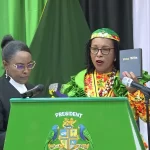Disaster Preparedness for Dominica

Disaster Preparedness for Dominica is a critical national priority due to the island’s exposure to natural disasters such as hurricanes, tropical storms, earthquakes, landslides, and flooding. In the hurricane-prone Caribbean region, Dominica has implemented a comprehensive disaster risk management framework to safeguard lives, infrastructure, and the environment. These efforts encompass government-led initiatives, community-based preparedness, and international collaborations to strengthen resilience against natural and climate-related disasters.
National Disaster Management Framework
The Office of Disaster Management (ODM) plays a pivotal role in overseeing Dominica’s disaster preparedness strategies. Operating under the Ministry of National Security and Legal Affairs, the ODM coordinates national disaster response initiatives, maintains early warning systems, and ensures the readiness of emergency shelters across the island. The National Emergency Planning Organization (NEPO) supports the ODM by bringing together stakeholders from government agencies, the private sector, and non-governmental organizations to develop and execute disaster risk reduction policies.
Community-Based Preparedness Initiatives
Local communities are integral to Dominica’s disaster preparedness. Village councils and community organizations, such as the Kalinago Youth Council and the Dominica Red Cross Society, actively engage in awareness campaigns, first aid training, and emergency response drills. Facilities like the Kalinago Territory Multipurpose Center and Emergency Shelter are critical hubs for community activities and emergency relief operations. Public education programs emphasize the importance of disaster readiness, including evacuation planning and the development of family emergency kits.
Key Disaster Preparedness Measures for Dominica
- Early Warning Systems: Dominica has invested in advanced meteorological equipment and communication networks to provide timely weather forecasts and hazard alerts. The integration of sirens, radio broadcasts, and mobile alerts ensures that residents receive critical information promptly.
- Emergency Kits and Supplies: Households are encouraged to maintain basic emergency kits containing non-perishable food, clean water, flashlights, first aid supplies, and essential documents. These kits are vital for survival during the initial days following a disaster.
- Resilient Infrastructure: Post-disaster recovery from events like Hurricane Maria in 2017 has driven the development of climate-resilient housing, retrofitting public buildings, and improved drainage systems to mitigate flood risks. The government has prioritized constructing resilient schools, healthcare facilities, and emergency shelters.
- Education and Training: Regular disaster response drills are conducted in schools, workplaces, and communities. Training programs focus on first aid, search and rescue, and hazard risk assessment to enhance local response capacity.
Government and International Support
Dominica’s disaster preparedness efforts benefit from strong partnerships with international organizations such as the United Nations Development Programme (UNDP), the Caribbean Disaster Emergency Management Agency (CDEMA), and the World Bank. These organizations provide technical assistance, funding, and expertise to support Dominica’s climate resilience projects. The Climate Resilience Execution Agency for Dominica (CREAD), established after Hurricane Maria, oversees long-term resilience-building initiatives, including sustainable land management and environmental conservation programs.
Dominica’s government continues strengthening its legal and policy frameworks, guided by the Disaster Risk Management Act and the National Climate Change Adaptation Policy. These measures ensure a coordinated and proactive approach to managing disaster risks and enhancing the nation’s ability to recover swiftly from adverse events.




